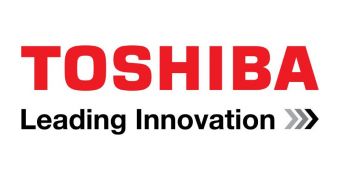Solid State Drives already have a high performance advantage over HDDs, but where their price and lower capacity mostly counterbalanced that, a new hardware engine developed by Toshiba could totally change the face of this competition, on the server market anyway.
Long story short, Toshiba has created a hardware engine, called NPEngine, which makes SSDs capable of streaming video content to IP networks without any help from the CPU or the system memory.
This has to be one of, if not the best uses yet for the high data transfers that NAND Flash memory can attain.
Given how much networks are used today for video streaming, this is a great boon to servers and data centers.
Sure enough, servers are exactly what Toshiba had in mind, and the company will even showcase an NPEngine-enabled one at the NAB show in Las Vegas, Nevada, between April 16 and April 19.
For our part, though, we have to wonder what will happen if Toshiba somehow turns this technology into one that all consumers can use, like if PCs integrate it somehow.
If SSDs really gain the ability to play video, or do anything else, without calling on the memory or CPU, they will have a clear advantage over HDDs like never before.
Even more than that, one should consider the possibility of all other NAND Flash devices getting a similar benefit.
Granted, we know this is still wishful thinking, and that it will take years for any progress to be made in this area, if there are even plans for such a thing, but still.
For those who want to know details on the NPEngine, it can simultaneously deliver up to 64,000 high quality video streams at a rate of 40 Gbps.
This is a major boost over regular servers, which have to use software to retrieve stored data and then run it through the CPU and SDRAM. Essentially, the limit is 20,000 on a typical 2RU server, also known as the “workhorse” among compact servers.
Add to that the reductions in space requirements and power use and there is little chance for NPEngine to be ignored.
To put things in perspective, NPEngine can allow a system meant to deliver 1,000,000 video streams to be 70% smaller and require 77% less energy.

 14 DAY TRIAL //
14 DAY TRIAL //